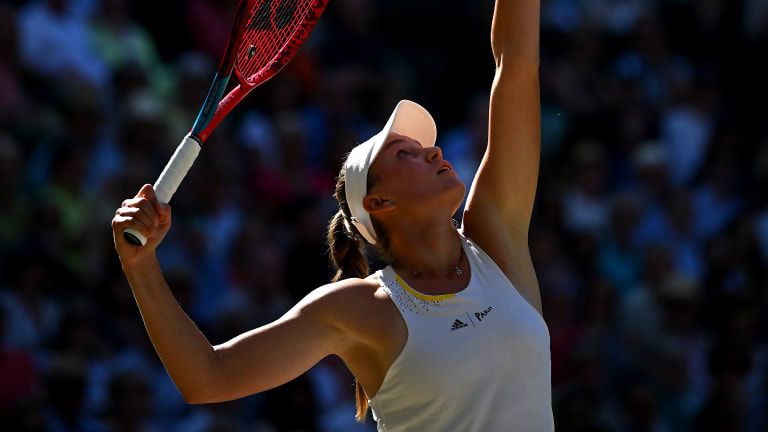The Placement
Ahead of her first major final, Rybakina admitted feeling the anxiety that often come with an occasion this big.
“I was trying to convince myself that it might happen again, and hopefully it's not the last time I'm in the final,” she explained after the match. “Not the first; not the last. I already did a great job with my team.
“With these kinds of words, I was trying to calm myself down.”
Nerves nonetheless came through in the opening set as Jabeur enraptured the crowd with her signature trick shots. Two breaks scored the opening set for the talented Tunisian and Rybakina was left to come up with a new game plan.
A post-match look at the No. 17 seed’s serving profile revealed she directed the majority of her first serves towards the Jabeur forehand, a strategy that proved ineffective as Jabeur won just under half of her return points in that first set.
Rather than press on in the hopes of breaking down that wing, Rybakina inverted her patterns and began aiming most of her serves to the Jabeur backhand. Where Jabeur had been able block Rybakina’s serve back with a forehand slice, the No. 3 seed found herself locked to the backhand and less able to put forth a deep reply.
The tactic proved its most potent in the final set when Rybakina fell behind 0-40 in the crucial sixth game. Just as Jabeur was reconnecting with her creativity, the Kazakh nailed four of her next five serves to the Tunisian’s backhand, guaranteeing a weak return that she could bat away for a winner.
Even when she missed her first serve, a heavy kick opened up similar opportunities to jam Jabeur’s backhand and led to a 73%-win percentage in the deciding set.
“I just try to do my best,” the famously serious Rybakina said before the final, “and focus on things which I can control: my serve, my shots, emotions.”
With no obvious hitches or weaknesses, was this serving performance just the opening salvo in Elena Rybakina’s march up the rankings? There may yet be a mental hill to climb as she adjusts to the altitude, but a pristine foundation—and a nigh-unbreakable serve—should make the transition towards the top fairly easy.
